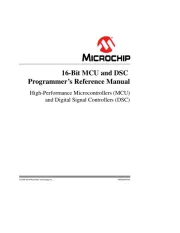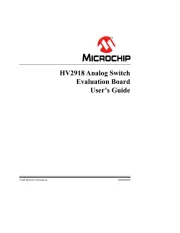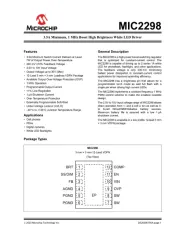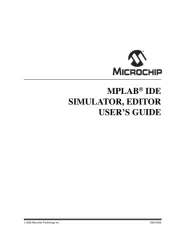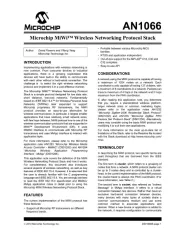2002 Microchip Technology Inc. DS00842A-page 1
MAN842
INTRODUCTION
True differential converters can offer many advantages
over single-ended input A/D Converters (ADC). In addi-
tion to their common mode rejection ability, these con-
verters can also be used to overcome many DC biasing
limitations of common signal conditioning circuits.
Listed below are some typical application issues that
can be solved with proper biasing of a differential con-
verter:
• Limited output swing of amplifiers
• Unwanted DC-bias point
• Low level noise riding on ground
• Unwanted or changing common mode level of
input signal
This application note discusses differential input config-
urations and their operation, circuits to implement
these input modes and techniques in choosing the cor-
rect voltage levels to overcome the previously
mentioned challenges.
DIFFERENTIAL AND SINGLE-ENDED
INPUT CONFIGURATIONS
Before discussing biasing solutions, it is important to
understand the functionality of differential A/D convert-
ers. The true differential A/D converter outputs a digital
representation of a differential input signal, typically a
two’s complement binary formatted output. The con-
verter output can be either signed positive or negative,
depending on the voltage level of the differential pair.
The following equation expresses this relationship for
the MCP330X devices:
EQUATION:
The binary output for the MCP330X is a 13-bit output
(12-bit plus sign output).
It is important to note that the converter output is zero
when the inputs are equal. As the voltage difference
between IN+ and IN- increases, the output code also
increases. The maximum voltage at which digital code
saturation will occur is VREF. The differential conver-
sion of the MCP330X converters will reject any DC
common mode signal at the inputs. For the MCP330X
converters, the common mode input range is rail-to-
rail, VSS-0.3V to VDD+0.3V.
The circuit in Figure 1 shows a differential signal being
applied to the IN+ and IN- pins of the converter. This
method is referred to as full differential operation of the
converter. The graph below the circuit shows possible
voltage levels for a differential application. The inputs
are centered around a common mode voltage, VCM.
VREF is equal to the maximum input swing, shown here
as VDD. By setting V
REF equal to the maximum input
swing of the signal, the full range of the A/D converter
is being used.
FIGURE 1: Driving a true differential
converter with a true differential input.
Author: Craig L. King
Microchip Technology Inc.
Digital Code 2n( ) IN+IN-
–( )
2V REF
--------------------------------------=
VDD
1 µF
Input Signal
Differential VREF
p-p
VREF
p-p
VCM
-4096 +4095
Output Code
IN+
IN-
VREF
VDD
1/2VDD
GND
Voltage Levels (V)
VCM
IN+
IN-
VREF VDD
VSS
Differential ADC Biasing Techniques, Tips and Tricks




